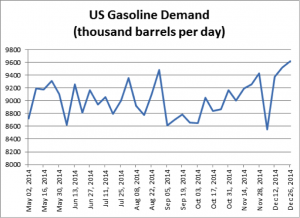NYT columnist: Gas really isn’t all that cheap
It’s about time somebody pointed out that gas, while cheaper than it’s been in the past few years, isn’t all that cheap, really. If you look at history.
New York Times business columnist David Leonhardt did just that, pointing out that the national average for regular unleaded — $2.03 per gallon — is “still more expensive than nearly anytime in the 1990s, after adjusting for general inflation. Over a 17-year stretch from the start of 1986 to the end of 2002, the real price of gas averaged just $1.87.”
Leonhardt notes that the era of cheap gas coincides with the “great wage slowdown.”
One of the surest ways to end the great wage slowdown would be for the United States to make sure it’s entering a new era of cheap energy. “It’s the proverbial tax cut,” says Daniel Yergin, vice chairman of the research firm IHS and author of a Pulitzer Prize-winning history of oil. If energy costs remain at current levels, it would put $180 billion into Americans’ pockets this year, according to Moody’s Analytics, equal to 1.2 percent of income and a higher share for lower-income households.
That’s why taking virtually every step to push oil costs even lower — “drill, baby, drill,” as the phrase goes — would make a lot of sense, so long as oil use did not have harmful side effects.
Ah, but it does have side effects. Leonhardt adds:
It leads to carbon emissions, which are altering the world’s climate. Last year was probably the planet’s hottest since modern records began in 1880, and the 15 hottest have all occurred since 1998. Oceans are rising, species are at risk and some types of severe storms, including blizzards, seem to be more common.
More oil production, then, involves enormous trade-offs: a healthier economy, at least in the short term, but a less healthy planet, with all of the political, ecological, health and economic downsides that come with it.
Leonhardt writes that it’s possible, in part, to retain the benefits of increased oil output without the drawbacks. Hydraulic fracturing is less carbon intensive than conventional oil drilling, although fracking comes with other issues. “Clean energy” offers a good solution, he says, “if it could become even cheaper.”


